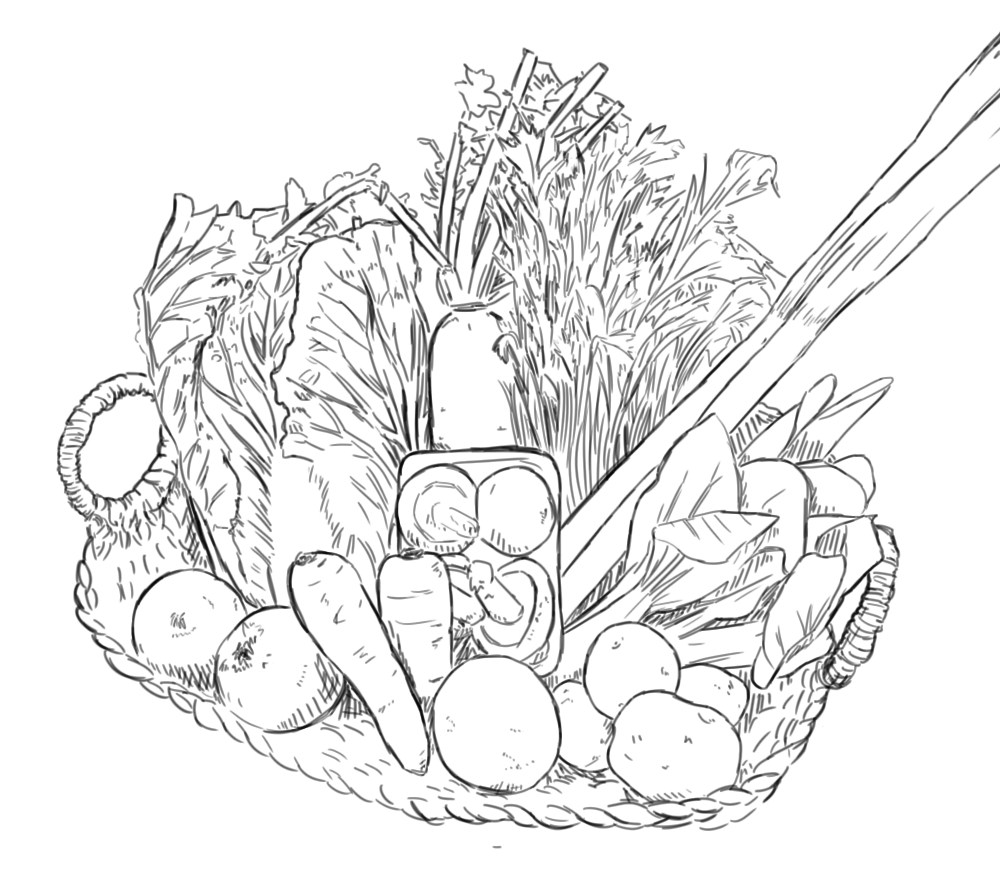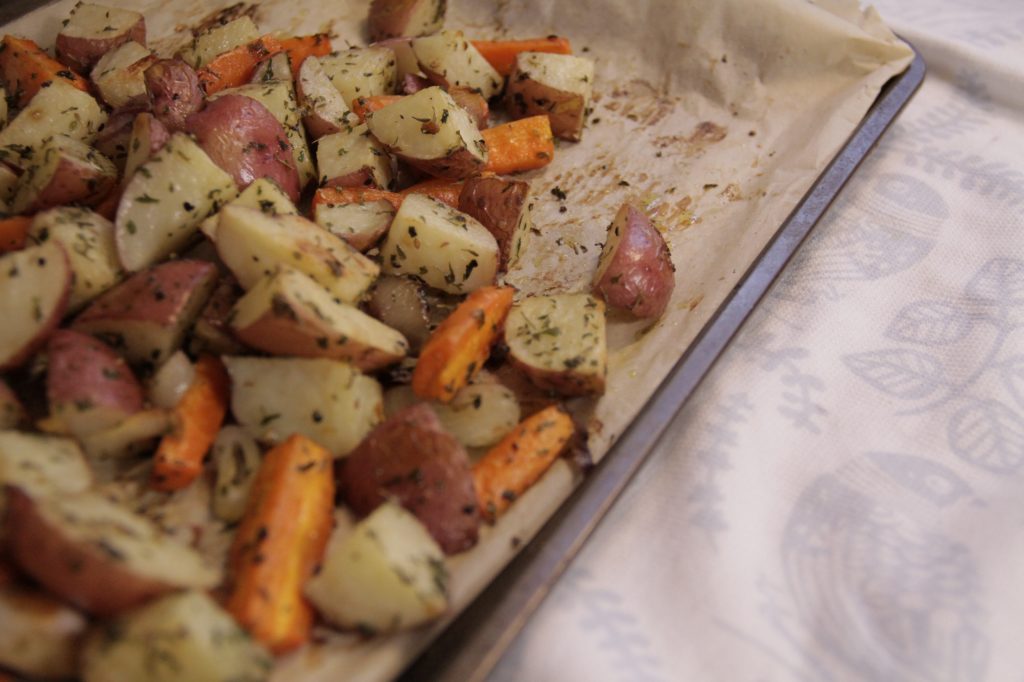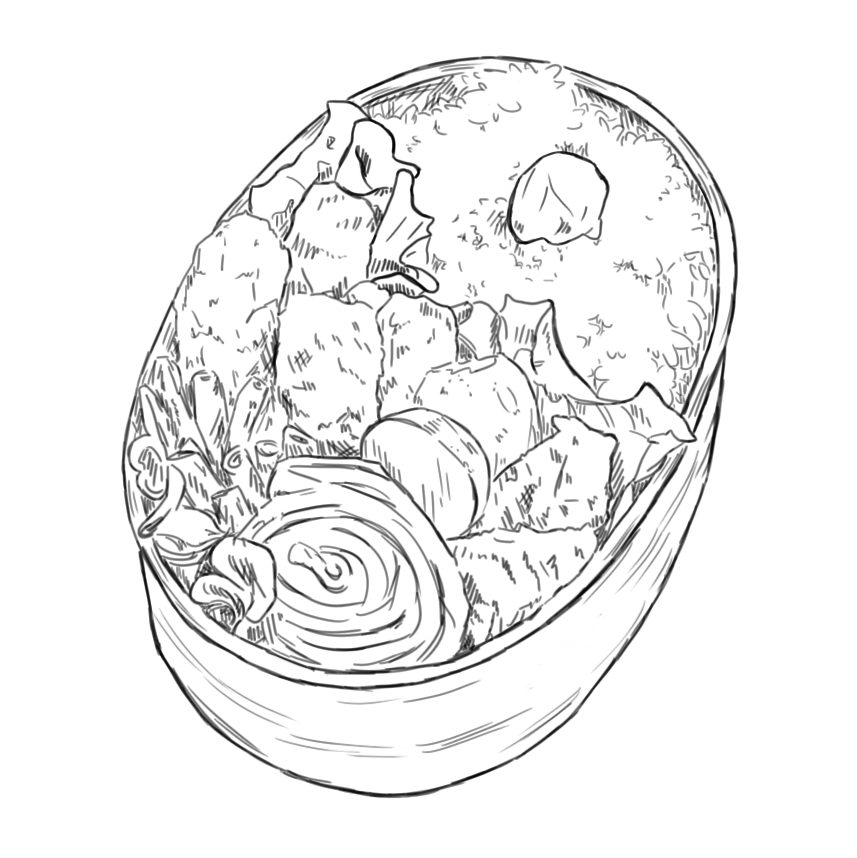
Furikake is a Japanese seasoning, often used on top of rice, cooked vegetables, or fish. It is traditionally made of dried fish (most often bonito), dried seaweed, sesame seeds, salt, and a bit of sugar.
Hundreds of different versions exist, including variations using salmon flakes, shiso herbs, dried vegetables, kombu and hijiki seaweed, wasabi, dried miso, peppers, or cured egg bits.
Furikake was first invented by a Japanese pharmacist named Suekichi Yoshimaru during the Taisho period, roughly 1912 to 1926. To address calcium deficits in his patients, he developed a powdered mixture of fish bones, roasted sesame seeds, poppy seeds, and seaweed. He named the product “Gohan no Tomo,” which translates to “friend of rice.”
Furikake did not gain widespread popularity until about 1948, however. Following World War II, many Japanese people were struggling with malnourishment, and so Nissin Foods began manufacturing the seasoning on a large scale. It was used as a way to add calcium and protein to rice-based meals in a simple and accessible way — by just sprinkling it on top.
By the time Japan recovered from the economic downturn of the war, furikake was a household staple. Today, most families keep a few variations in their kitchen cabinet and use it to season their rice, vegetables, and fish.

How to Use Furikake
Rice
The simple, original way to use furikake: just sprinkle it on top. This could include adding it to plain rice in onigiris (Japanese rice balls), or rice bowls such as poke bowls, vegetable bowls, and even curry.
Vegetable seasoning
This is my favorite way to use furikake — to season my vegetables. I have about five different kinds of furikake on hand at all times, and it allows me to have my favorite vegetables in a variety of flavors so I’m never bored by them.
While there are multiple ways to use it to flavor vegetables, I find that oven-baking them with a mixture of melted butter and furikake is most fail-proof, not to mention easiest to clean up. I often take vegetables that bake well (broccoli, red peppers, eggplant, sweet potato, carrots), massage them with a pat of melted butter and furikake on a metal sheet pan, and bake or broil them on high for about 15 minutes.
Add these baked vegetables to any of your meals for a healthy serving of nutrition.

Salmon or chicken seasoning
Another way to incorporate furikake into your meals is to use it to season your fish or white meats (I find that the flavors of furikake don’t tend to complement red meats that well, but this is purely a personal preference).
Simply take your filet, salmon for example, generously season both sides with furikake, and pan fry with butter or sesame oil. Depending on the furikake you use, the seasoning will add an element of sweetness, acidity, or umami, that will make your protein taste so much more interesting than a simple salt/pepper/oil combination.
Different Kinds of Furikake
The best thing about furikake is that there are so many different kinds of it, so if you aren’t in the mood for a certain bonito-sesame flavor one night, you can replace it with a flavor of dried nori seaweed and cured salted eggs. In addition, you may choose to use different kinds of furikake based on not just your flavor profile, but on the nutrition it provides. Below is a list of different kinds of common furikake ingredients that are most supportive of those in need of specific vitamins or minerals.
For iron
- Kombu
- Albacore tuna
- Cured egg yolk
- My favorites: Katsuo flakes, kozakana, kombu furikake by Hiromedou
For zinc
- Shiitake mushrooms
- Scallop
- My favorites: Scallops and kombu furikake by Hiromedou
For calcium
- Small fish (kozakana)
- Sesame seeds
- Hijiki, nori
- My favorite: Shirasu small fish furikake by Hamaotome
For magnesium
- Hijiki, nori, various sea vegetables
- Shiso (Perilla)
- Scallop
- Sesame seeds
- My favorite: Red perilla by Hamaotome
Furikake is not a silver bullet, but it is an incredibly easy and effective way to introduce trace minerals and essential vitamins into your daily meals. Whether you find your vegetables too boring and want to add more flavor or your meals lack the nutrition you need to maintain a healthy body and mind, furikake can be a great way to add more variety and color into your meals.
Eating healthily doesn’t need to be and shouldn’t be a source of stress, but rather an element of our lifestyle that brings us more energy and joy. Because a healthy lifestyle is not about restricting ourselves to bland vegetables or single-category foods, but it’s about balancing and flavoring natural foods in ways that make our meals more attractive to us. Instead of focusing on eliminating “unhealthy” foods, adopt ways to make the food that is best for your body taste and look irresistible, so you never feel deprived again.

If you enjoyed or related to this article, let me know! In addition, I’m open to answering any questions or inquiries you might have, just reach me at kokumura@kakikata.space! I would love to support your health journey in any way I can 🌱 Warm regards, Kaki